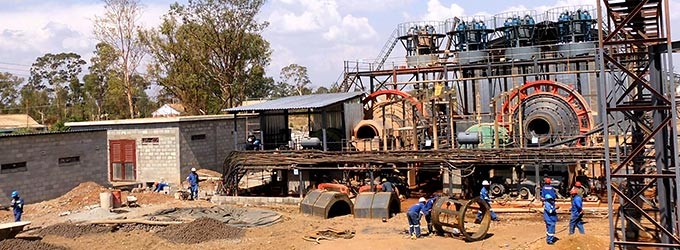What are mineral sands?
The term "mineral sands" typically refers to concentrations of heavy minerals (HM) in an alluvial environment, such as old beaches or river systems. These deposits are also referred to as "heavy mineral sands" or "beach sands." Additionally, mineral sands can be found in "dune sands."
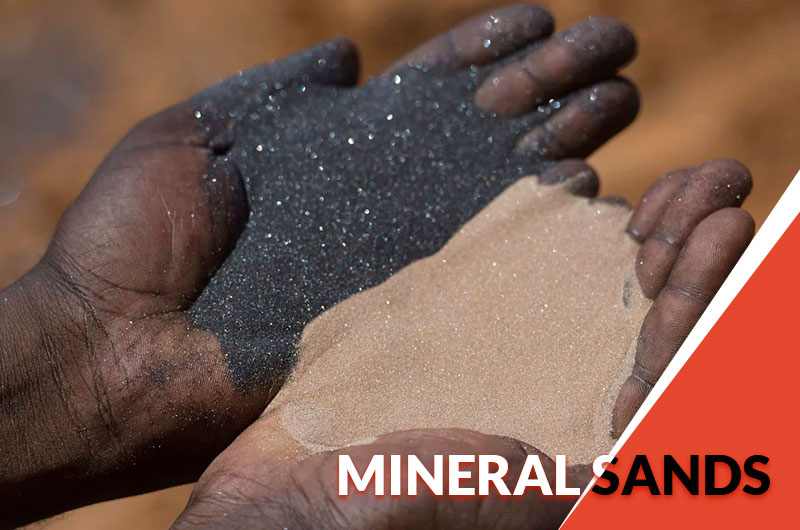
What minerals are found in beach sands?
Common minerals found in beach sands include ilmenite, leucoxene, rutile, zircon, magnetite, garnet, quartz, and monazite. The specific mineral assemblage in beach sands can vary depending on the local geology and the erosion of nearby rocks.
| Mineral | Magnetic susceptibility | Electrical conductivity | Specific gravity | Chemical formula |
| Ilmenite | High | High | 4.5 - 5.0 | Fe.TiO3 |
| Rutile | Low | High | 4.2 - 4.3 | TiO2 |
| Zircon | Low | Low | 4.7 | ZrSiO4 |
| Leucoxene | Semi | High | 3.5 - 4.1 | Fe.TiO3.TiO2 |
| Magnetite | High | Low | 4.9-5.2 | Fe3O4 |
| Monazite | Semi | Low | 4.9 - 5.3 | (Ce,La,Th,Nd,Y)PO4 |
| Staurolite | Semi | Low | 3.6 - 3.8 | Fe2Al9Si4O22.(OH)2 |
| Kyanite | Low | Low | 3.6 - 3.7 | Al2SiO5 |
| Garnet | Semi | Low | 3.4 - 4.2 | (Fe,Mn,Ca)3.Al2(SiO4)3 |
| Quartz | Low | Low | 2.7 | SiO2 |
What is mineral sand beneficiation?
Mineral sand beneficiation, also known as beach sand beneficiation, refers to the process of extracting valuable heavy minerals from beach sand deposits through various techniques.
The specific beneficiation techniques used may vary depending on the mineral composition and the desired end products. Here is a typical beach sand beneficiation flowsheet:
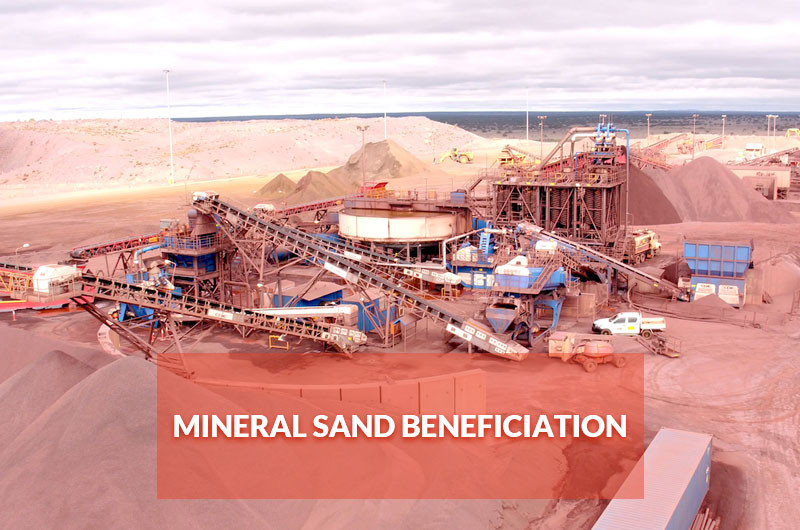
-
1 Feed preparation:
Remove impurities such as clay, vegetation, and organic matter through scrubbing, screening, and desliming. If necessary, grind the sand to achieve the desired particle size.
-
2 Gravity separation:
Mix the clean mineral sand with water to create a slurry. Feed the slurry into a gravity separation device such as spirals or shaking tables. This process utilizes differences in specific gravity to remove lighter gangue minerals and collect heavy minerals as a concentrate.
-
3 Magnetic separation:
The heavy mineral concentrate contains magnetic minerals such as ilmenite and magnetite. Magnetic separation can collect these minerals as a separate concentrate or to remove magnetic impurities, thereby enriching the concentration of non-magnetic minerals such as zircon, rutile, and garnet.
-
4 Electrostatic separation:
Rutile and ilmenite have high electrical conductivity, while zircon has lower conductivity. Electrostatic separation removes non-conductive gangue minerals and concentrates valuable conductive minerals.
-
5 Flotation:
Flotation mainly recovers rutile, zircon and monazite in heavy mineral concentrates. By selectively floating the target minerals like rutile, zircon, or monazite, the concentration of these minerals in the concentrate is increased, enhancing their recovery and value.
-
6 Dewatering and product handling:
The final concentrate, enriched with valuable heavy minerals, undergoes dewatering processes to reduce its moisture content. Various methods like centrifuges, thickeners, or filters are used for dewatering. The resulting dewatered concentrate is then stored or transported for further processing or sale.
-
7 Tailings management:
The tailings, consisting of the gangue material and water, are managed and treated to minimize environmental impact. Tailings may undergo dewatering, thickening, or sedimentation processes to reduce water content and facilitate proper disposal or utilization.
Beach sand beneficiation equipment
Trommel screen
A trommel screen removes clay and oversize material and separates the feed material into different size fractions.
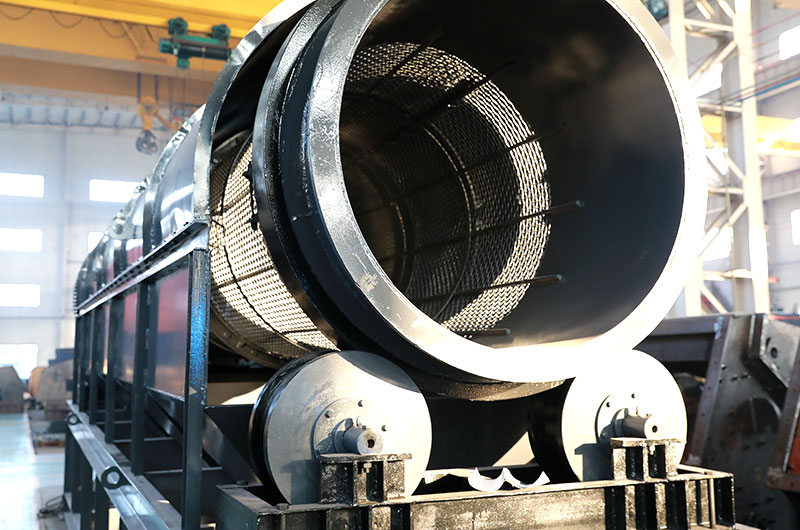
- Feed size: 3-100 mm
- Capacity: The output of a 2 mm sieve is 35 m³/h (56 t/h). The output of a 30 mm sieve is 175 m³/h (280 t/h), which meets the requirements of large-scale production.
- Durability: The drum, screen panels, support structure, and drive system are made of materials such as stainless steel, high-strength alloys, and wear-resistant coatings to have a long lifespan.
Ball mill
A ball mill grinds mineral sands to achieve the desired liberation and size reduction of the valuable minerals.
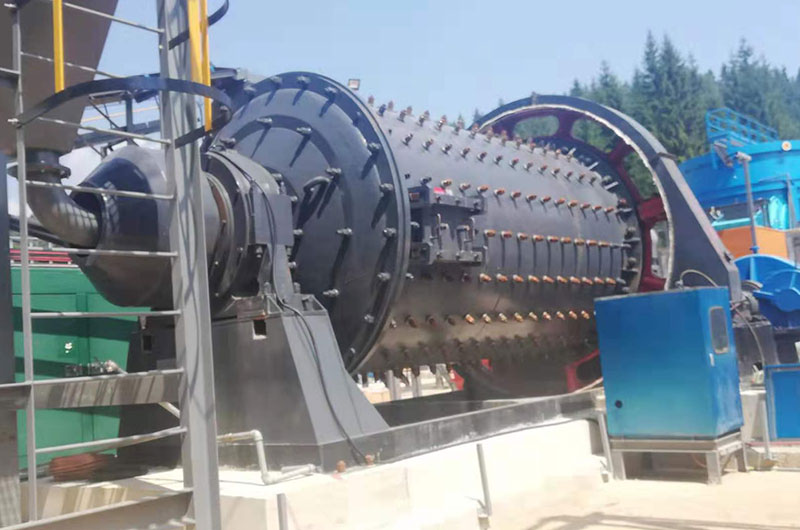
- Feed size: <25 mm
- Discharge size: 0.074-0.4 mm
- Capacity: 0.65-615 T/H
- Durability: To ensure durability, the mill shell, liners, and grinding media are made of high-quality materials that provide resistance to wear and corrosion.
Spiral chute
Spiral chutes, also known as spirals, are effective in separating heavier minerals such as rutile, zircon, ilmenite, and monazite from lighter gangue materials.
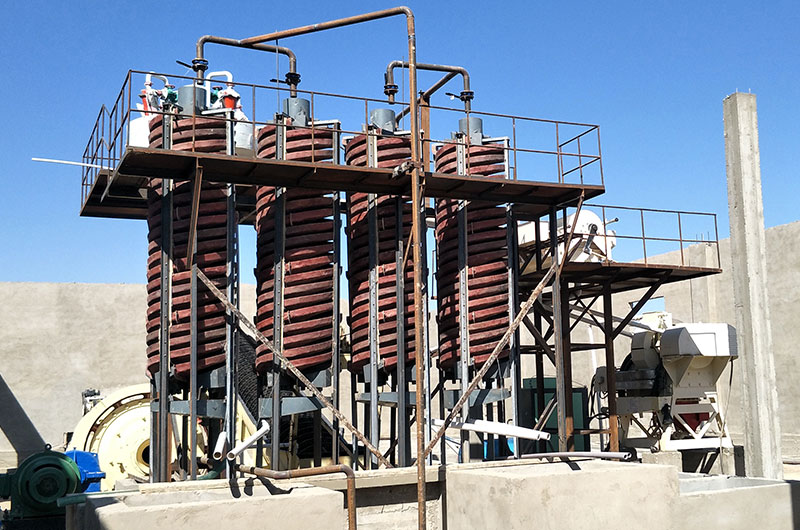
- Feed size: 0.02-0.3 mm
- Capacity: 2-40 T/H
- Durability: The chute material and wear-resistant coating provide abrasion, corrosion and impact resistance for extended service life. Glass steel chute, wear-resistant rubber liner, and polyurethane rubber liner are available.
Shaking table
A shaking table, also known as a shaking concentrator or gravity table, concentrates heavy minerals such as zircon, rutile, and ilmenite. It is particularly effective in recovering fine-grained minerals.
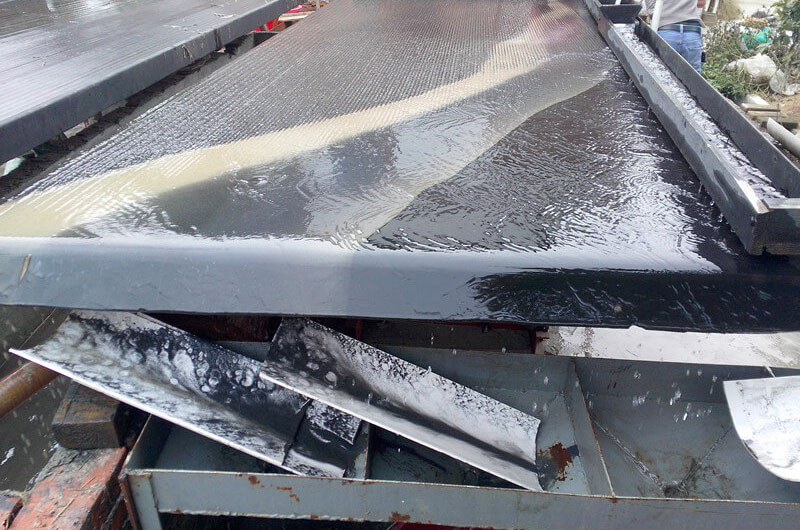
- Feed size: 0.15–2 mm
- Capacity: 10-60 T/D
- Durability: The table structure, deck surface, support system, and drive mechanism are constructed using high-quality steel and alloys to ensure durability.
Magnetic separator
A magnetic separator is effective in recovering magnetic minerals such as ilmenite, rutile, and garnet from mineral sands feed. It also helps remove magnetic gangue minerals like magnetite or hematite.
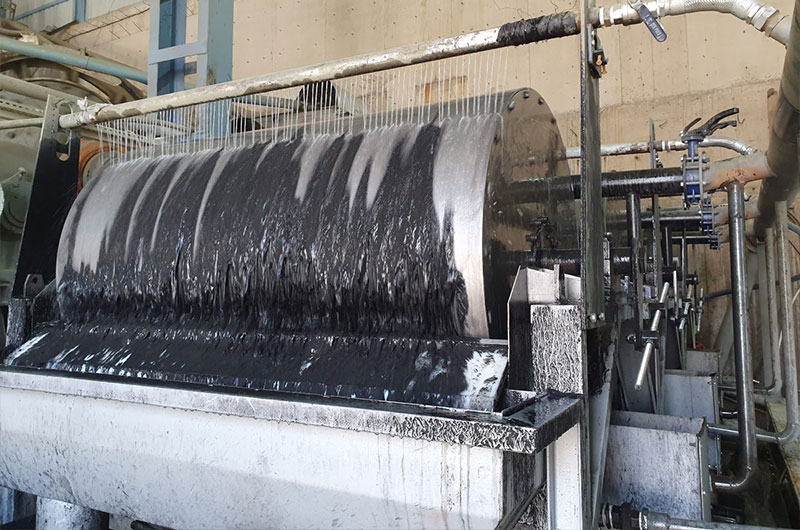
- Feed size: 3 mm
- Capacity: 280 T/H
- Durability: Drums use high-quality stainless steel or other corrosion-resistant alloys for added durability. The magnetic element is made of high-quality ferrite or composite including ferrite material and rare earth magnetic steel. The demagnetization rate of the magnetic density within 8 years shall not exceed 5%.
Thickener
The thickener, also known as a high-efficiency concentrator, serves three purposes: enriching valuable heavy minerals such as rutile, ilmenite, zircon, garnet to obtain concentrated heavy mineral concentrates; reducing the moisture content of heavy concentrates; and effectively separating and dehydrating the tailings in the tailings discharge link.
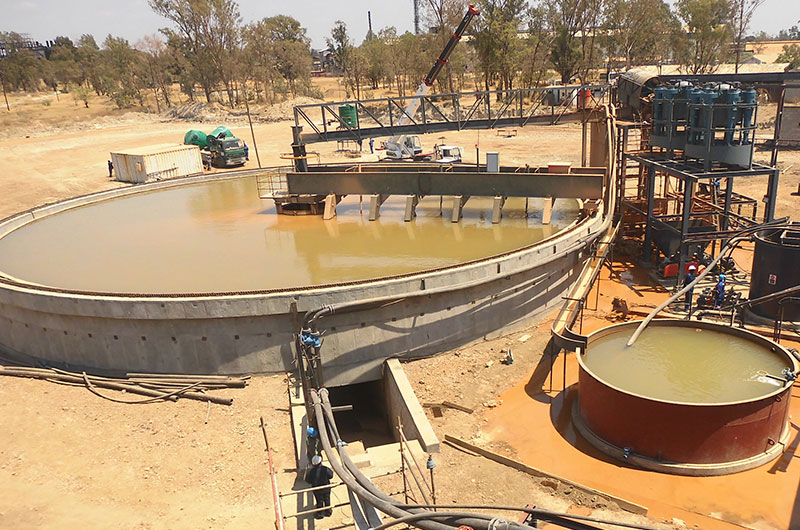
- Capacity: 5.6-3030 T/D
- Equipment size and footprint: Φ1.8m-Φ100m
- Durability: Corrosion-resistant alloys like carbon steel and stainless steel are used for the tank, supporting structures, and frames. The rake arms and scraper blades are made of wear-resistant alloys such as high chromium white iron and hardened steel. The application of corrosion-resistant and wear-resistant materials enhances durability.
Electrostatic separator
According to the difference in mineral conductivity, the electrostatic separator extracts minerals with high conductivity such as rutile and ilmenite, and removes minerals with low conductivity such as zircon, quartz and feldspar.
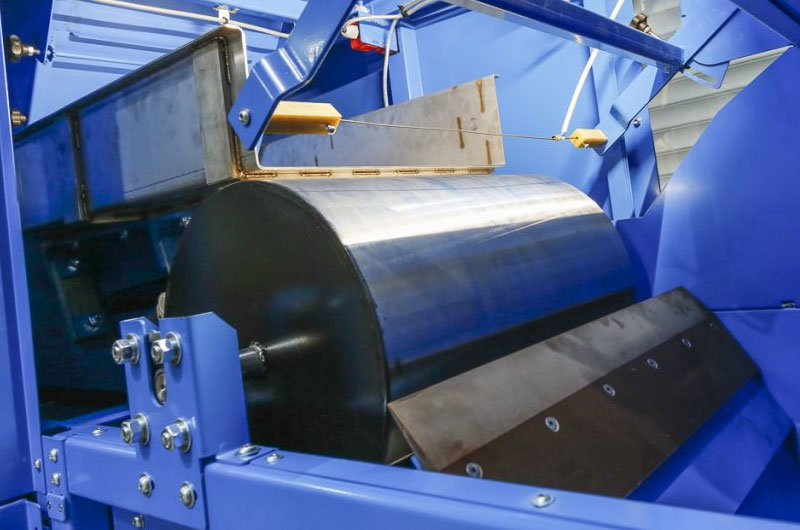
The key control variables for separation are:
- Applied voltage;
- Roll speed;
- Splitter plate position;
- Low humidity atmospheric conditions (hence units have heaters);
- Electrode position.
Flotation cell
The flotation cell separates valuable heavy minerals such as rutile, ilmenite, and zircon from gangue minerals according to the difference in hydrophobicity.
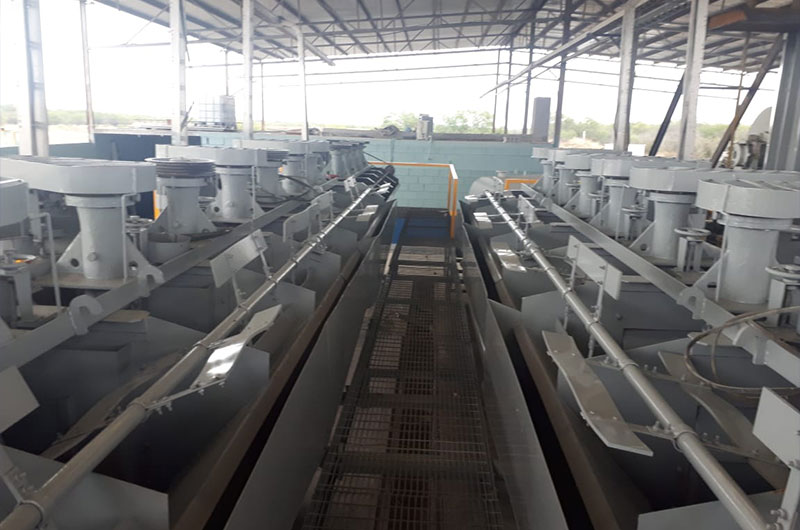
- Capacity: 0.18-20 m³/min
- Effective cubage: 0.35-20 m³
- Durability: The tank, supporting structure, and impeller casing of the flotation cell are made of high-strength and corrosion-resistant materials such as stainless steel or carbon steel with corrosion-resistant coating). Impellers and agitators are made of materials such as high-strength stainless steel, rubber-coated steel, or polyurethane to withstand the abrasiveness of the slurry and the mechanical forces involved in agitation.
Rotary dryer
Excessive moisture in heavy mineral concentrates makes them difficult to handle and transport and reduces the quality. Rotary dryers solve these challenges by effectively reducing the moisture content of heavy mineral concentrates to the required levels.
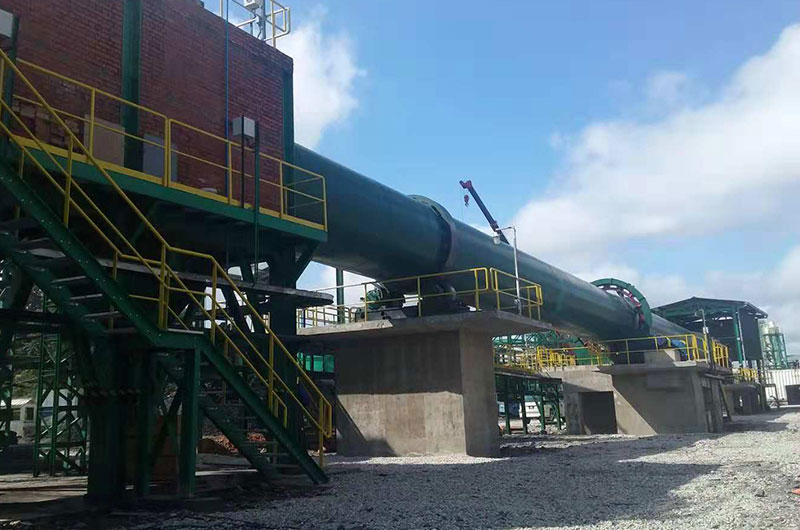
- Capacity: 1.9-76.0 T/H
- Power: 7.5-160 kw
- Heating method: direct and indirect
- Durability: Drum shells, blades, trunnion wheels, support rollers, and drive systems are designed and built with wear-resistant materials such as high-strength carbon steel to withstand the mechanical stress, high temperatures, and wear encountered during operation. Also, choose proper seals and gaskets to prevent air or dust leakage to enhance the efficiency and safety of the drying process.
3 notes on beach sand beneficiation
To achieve legal, environmentally friendly, and sustainable production, the following three notes should be considered when mining and processing heavy mineral sand on the beach.
Rehabilitation
Beach sand beneficiation, which involves the extraction and processing of heavy minerals from placer deposits (such as beach sands or river sediments), can have several environmental impacts like habitat destruction, soil erosion and sedimentation, and water pollution.
Therefore, it is necessary to develop a scientific rehabilitation and land restoration plan before engaging in heavy mineral sand mining and processing on the beaches.
Laws and regulations
Some countries may have restrictions or limitations on heavy mineral sand mining and processing due to environmental concerns, indigenous rights, or other factors.
Examples of laws and regulations that may apply to heavy mineral sand beneficiation are Mining and Mineral Resource Laws, Environmental Impact Assessment (EIA), Water Resource Management, Rehabilitation and Closure Plans, Indigenous and Community Engagement, Health and Safety Regulations, and Export and Trade Laws.
To obtain the most accurate and current information on countries that prohibit heavy mineral sand mining and processing, it is advisable to consult the specific mining laws and regulations of individual countries, reach out to relevant government agencies or industry associations, or consult with legal experts specializing in mining and mineral resource management.
Water management
Heavy mineral beneficiation often requires the use of water for various processing steps, such as washing, screening, and separation.
Improper management of water resources can lead to the depletion of water sources, contamination of nearby water bodies with sediments and chemicals, and disruption of the hydrological balance in the area.
Here are some measures you can take:
- Water efficiency and conservation: Implement recycling and reuse systems, adopt closed-loop water management systems, use efficient equipment and technologies that reduce water consumption.
- Water monitoring and assessment: Regularly monitor and assess water quantity and quality parameters to understand the baseline conditions and track any changes over time.
- Sedimentation and erosion control: Implement erosion control measures, such as proper land grading, contouring, and stabilization techniques, to prevent excessive erosion and sedimentation in water bodies.
- Stormwater management: Design and construct appropriate drainage systems, sedimentation ponds, and sediment control structures to minimize the impact of stormwater runoff on water quality.
Where to find mineral sand deposits?
Heavy mineral sand deposits are primarily found in coastal areas and are associated with ancient or current beach and dune systems.
Some countries rich in heavy mineral resources include:
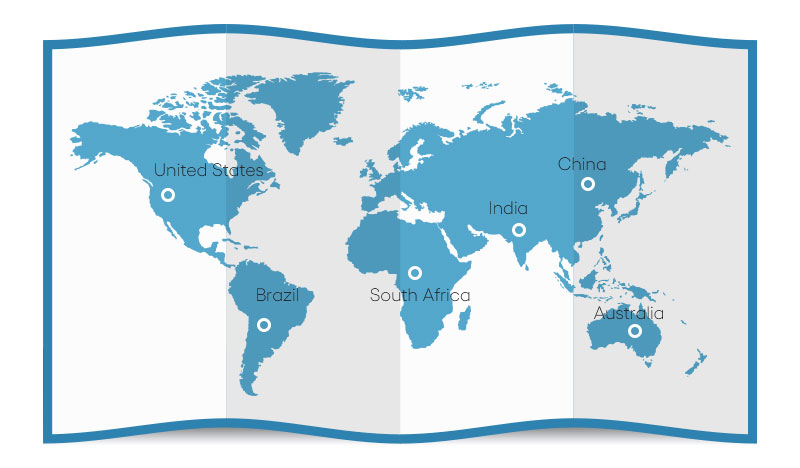
-
1Australia
Australia has significant deposits of heavy mineral placers, particularly along the coastlines of Western Australia, New South Wales and Queensland. These deposits contain minerals such as ilmenite, rutile, zircon and monazite. -
2India
India is known for its heavy mineral placer deposits found in the coastal states of Odisha, Andhra Pradesh, Tamil Nadu and Kerala. These deposits contain minerals such as ilmenite, rutile, zircon, garnet and sillimanite. -
3South Africa
South Africa is known for its extensive deposits of heavy mineral sands along its eastern and western coastlines, especially in KwaZulu-Natal. Deposits in South Africa contain minerals such as rutile, ilmenite, zircon and garnet. -
4United States
The United States has notable heavy placer resources in various locations. For example, the southeastern states, such as Florida and Georgia, are known for titanium minerals and zircon deposits. Additionally, the coastal areas of Oregon and California have deposits of minerals like gold, platinum, and chromite. -
5Brazil
Brazil is rich in heavy mineral sand resources, mainly distributed in Rio de Janeiro, Espirito Santo and Bahia states. The deposit contains minerals such as ilmenite, rutile, zircon and monazite. -
6China
China is a major producer of heavy minerals and has extensive placer deposits. The Hainan, Guangdong, and Fujian provinces are notable for their mineral sand deposits containing ilmenite, rutile, zircon, and monazite.
What are the uses of heavy mineral sands?
Heavy mineral sands have various uses across different industries due to the presence of valuable minerals they contain. Here are some common uses of heavy mineral sands:
Titanium Minerals (Ilmenite, Rutile)
Titanium minerals have numerous applications, including:
- Production of titanium dioxide (TiO2) pigment, which is used in paints, coatings, plastics, and paper.
- Manufacturing of titanium metal, which has excellent strength-to-weight ratio and corrosion resistance, used in aerospace, automotive, and industrial applications.
- Production of titanium sponge, which is further processed into various titanium products like bars, sheets, and wires.
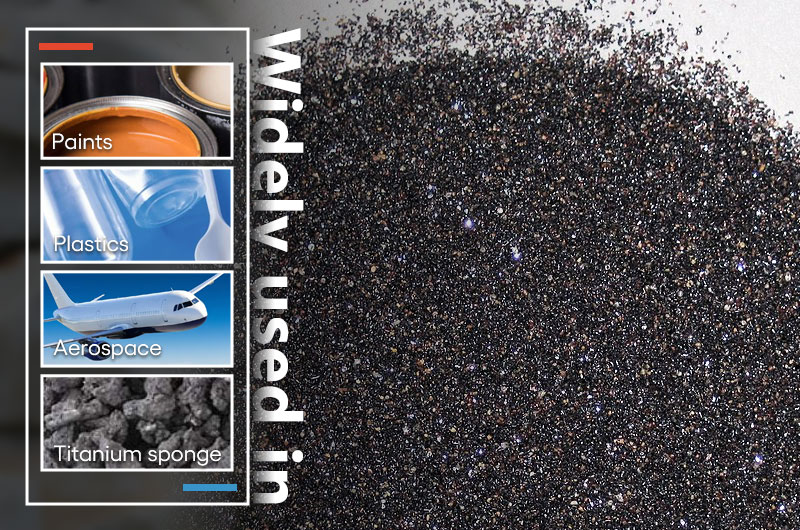
Zircon
Zircon is used in various industries for its high refractive index and resistance to heat and chemical corrosion. Some common uses of zircon include:
- Manufacturing of ceramics, including tiles, sanitaryware, and tableware.
- Production of refractories and foundry molds.
- Use in jewelry as a gemstone.
- Application in the nuclear industry as a component of fuel rods.
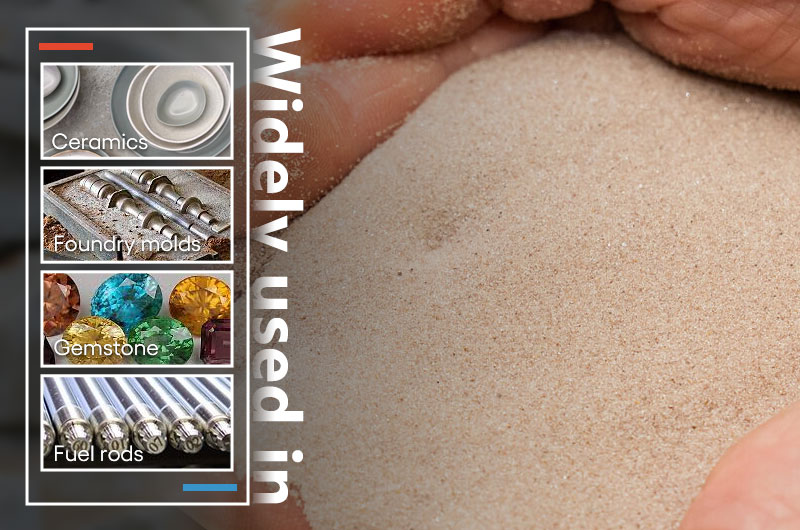
Garnet
Garnet is known for its hardness and abrasive properties. Common applications are the following:
- Abrasive blasting, such as in sandblasting operations for surface preparation and cleaning.
- Waterjet cutting, where high-pressure water mixed with garnet is used to cut various materials.
- Water filtration, as garnet particles are effective in removing sediment and impurities from water.
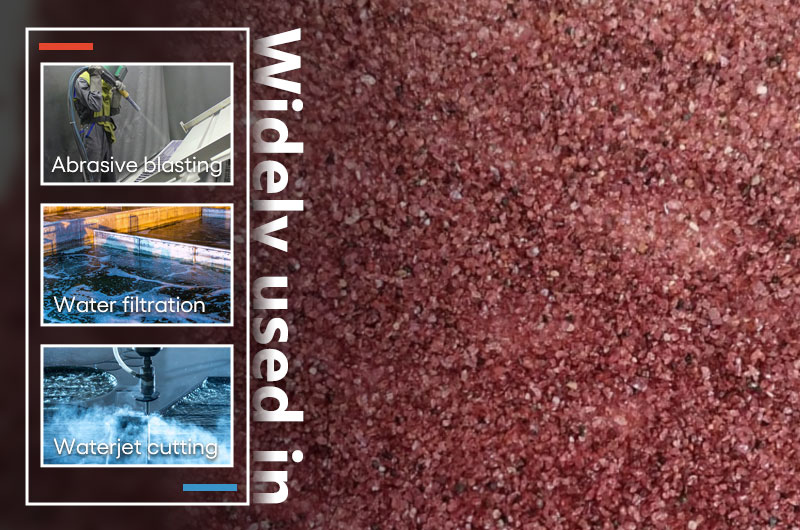
Monazite
Monazite contains rare earth elements, primarily cerium, lanthanum, and thorium. It has applications in:
- Production of rare earth metals and alloys, which are used in various electronic devices, magnets, and green technologies.
- Nuclear industry.
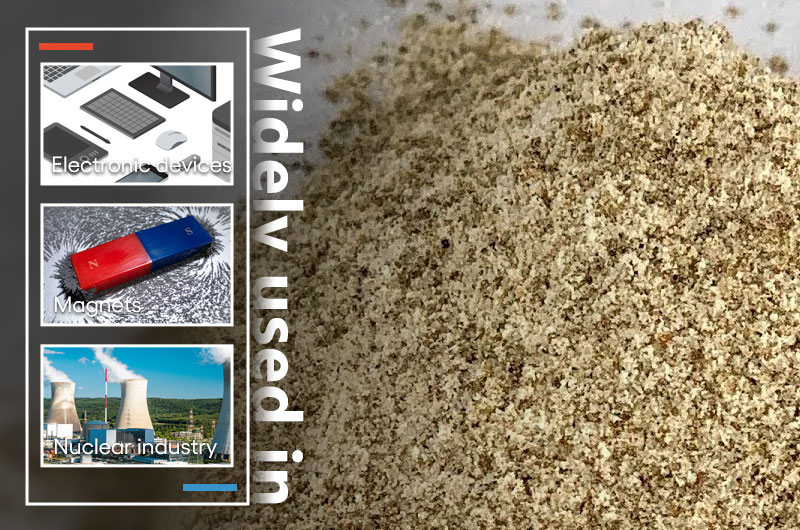
Conclusion
Heavy mineral sands contain economically important minerals such as titanium minerals (ilmenite, rutile), zircon, garnet, monazite, and others. These minerals have various industrial applications in sectors such as aerospace, construction, ceramics, paints and coatings, and electronics.
The demand for these minerals, driven by industrial growth and technological advancements, creates a market for heavy mineral beach sand beneficiation, making heavy mineral beach sand beneficiation holds significant economic potential.


